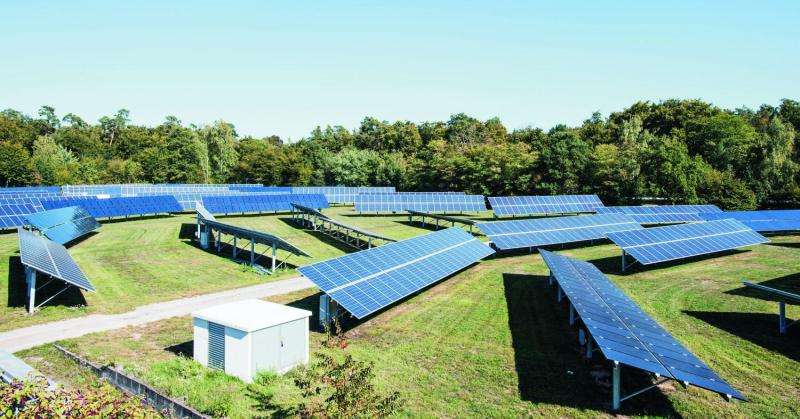How atmostpheric dust affects photovoltaic output

A hazy sky and dirty cars are well-known consequences of Saharan dust carried to Europe by air currents. As part of the "PerduS" project, the German Weather Service (DWD), the Karlsruhe Institute of Technology (KIT) and meteocontrol are currently examining how dust – as haze in the atmosphere and deposited on solar panels – affects the output of photovoltaic systems. The aim is to provide a more reliable forecast for the output of photovoltaic systems through a better prediction of the spread of dust.
When it comes to Saharan dust outbreaks, the photovoltaic output is reduced not only through a significant increase in atmospheric aerosol content by 10 to 20 percent, but also through dust deposition on the photovoltaic modules on subsequent days. These are the findings of preliminary investigations by the project partners. Often the term "blood rain" is used in combination with the soiling of cars by Saharan dust mixing with rain.
"With Saharan dust outbreaks, atmospheric currents carry dust blown up in the Sahara over very long distances, even as far as Central Europe," Dr. Bernhard Vogel, meteorologist at KIT, explains. "On a long-term average, we're observing this on four days a month in spring and summer in Germany, and in some years on up to nine days a month."
According to the Federal Statistical Office, six percent of total gross electricity was generated by photovoltaic systems in Germany in 2015. The installed capacity of all photovoltaic systems is around 39 gigawatts in the whole of Germany, which means that the systems can produce a peak output of more than 30 gigawatts on cloudless days. This corresponds to the output of more than 20 German nuclear power plants. So far, output forecasts cannot yet realistically take into account the effect of Saharan dust, but the project team thinks that this is necessary to ensure grid stability.
The Federal Ministry for Economic Affairs and Energy is funding the PerduS research project for four years. The primary objective is to bring together all components in a forecasting process, which are necessary for taking into account Saharan dust outbreaks for the prediction of the photovoltaic output. This involves expanding ICON, the numerical weather forecast model from DWD, with an improved dispersion prediction of desert dust in collaboration with KIT. The ICON-ART modelling system will then be used for future dust outbreaks alongside the commonly used numerical weather prediction. This means that the system will provide information on the sunlight which is reduced by simulated dust distribution. Based on this, the forecast service provider meteocontrol will produce power forecasts, and evaluate the technical and economic benefit of the new forecast system. The expected soiling of photovoltaic systems by the deposited Saharan dust will also be estimated, and how soon the dust will be washed off by rain later on.
ICON-ART modelling system and measuring systems used
To expand the ICON modelling system, which has been used at DWD for the daily numerical weather prediction since January 2015, the Institute of Meteorology and Climate Research at KIT developed the ART module (Aerosols and Reactive Trace Gases). It enables the dispersion of particles such as mineral dust and sea salt and their interaction with clouds to be simulated. In the past and also in collaboration with DWD, ICON-ART was used in forecasts for simulating the dispersion of ash particles following volcanic eruptions. KIT's main research objectives in PerduS are to further develop the description of dust emissions in the Saharan source region, and to better describe the interaction between dust particles and atmospheric radiation.
What's more, measurements at the solar power storage park at KIT Campus North are carried out to determine the level of soiling of the solar panels by deposited mineral dust and its effect on photovoltaic output. The scientists also use these measurements to record the effect of precipitation in cleaning the solar panels again. To achieve this they use precipitation radar, KIT's measuring tower, instruments for measuring droplet size distribution and the amount of precipitation, and DWD's Aerosol lidar system. The descriptions of the relevant processes derived from these measurements will then be integrated into the ICON-ART modelling system.
More information: More information on the KIT Climate and Environment Center: www.klima-umwelt.kit.edu
Provided by Karlsruhe Institute of Technology





















